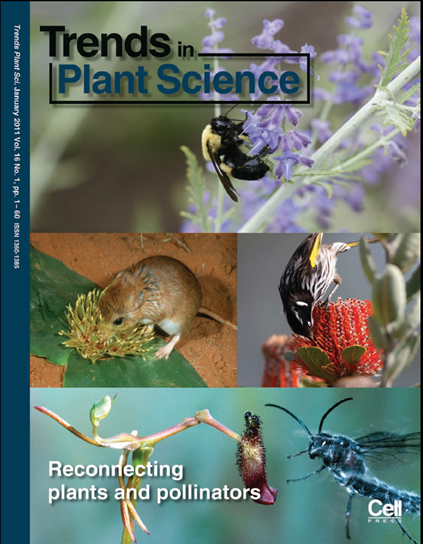7 June 2011 | By Steve Johnson
The old adage than “an ecosystem is more than the sum of its parts” is well illustrated by plant-pollinator mutualisms. Pollination is a vital ecosystem process that mostly goes unnoticed, typically involving small animals that transfer pollen from flower to flower as they sip nectar or gather pollen. In the absence of pollination most plants will cease to produce seeds and will eventually disappear from a community. Worryingly for restoration ecologists, even if large numbers of individuals of a plant species are introduced artificially, they will not establish viable populations if their pollinators are not available.
Restoration of ecosystems in landscapes, such as those recently cleared of invasive woody alien plants in South Africa, requires that plants and their pollinators be reconnected. In most cases this reconnection happens naturally, with insects and vertebrates moving in from adjacent intact ecosystems to service the flowers of plant species that have been re-established. In other cases, where plants or their pollinators are highly specialized, or when the restored habitat is isolated and not surrounded by natural ecosystems, the reconnection is much more difficult to achieve. Physically reintroducing insects may be near impossible, especially when little or nothing is known about their larval biology.
A more feasible approach may be to reintroduce guilds of plants which will support animal pollinators that find their own way to the area under restoration. Such plantings can include “framework” species that support a wide range of animals, and “bridging” species that flower in a sequence, supporting specific animals that require nectar over much of the year, such as birds. However, none of this can be achieved without a fundamental understanding of the structure of plant-pollinator networks. Many network studies have been conducted over the past decade, but most have been ecologically superficial, involving little more than descriptions of the patterns of connectivity between plants and flower visitors. These preliminary studies suggest strong asymmetry in networks, with plants showing greater specialization than their flower visitors.
Most plant species worldwide would not be threatened by the loss of a single pollinator species, but in South Africa hundreds of plant species rely on single pollinator species, making the challenge of restoring these plants to places where they have been extirpated daunting. For plants that share pollinators, there is also no way of predicting whether they will compete or facilitate each other’s pollination when reintroduced together. Further highlighting our ignorance is the fact that the number of published studies on restoration of pollination mutualisms in natural ecosystems can be counted on the fingers of one hand.
Ultimately, successful restoration of plant-pollinator mutualisms in degraded areas may require a landscape-level approach which takes into account availability of suitable insect larval habitats, planting of key species to support pollination guilds, and habitat corridors that facilitate the movement of vagile animal pollinators.
Steve Johnson, a C·I·B core team member at the University of KwaZulu-Natal, contributed to a review of the challenges and opportunities in restoration of plant-pollinator mutualisms that was published as the cover story in the January 2011 issue of Trends in Plant Science.
Contact the author Steve Johnson

 Read the paper
Read the paper